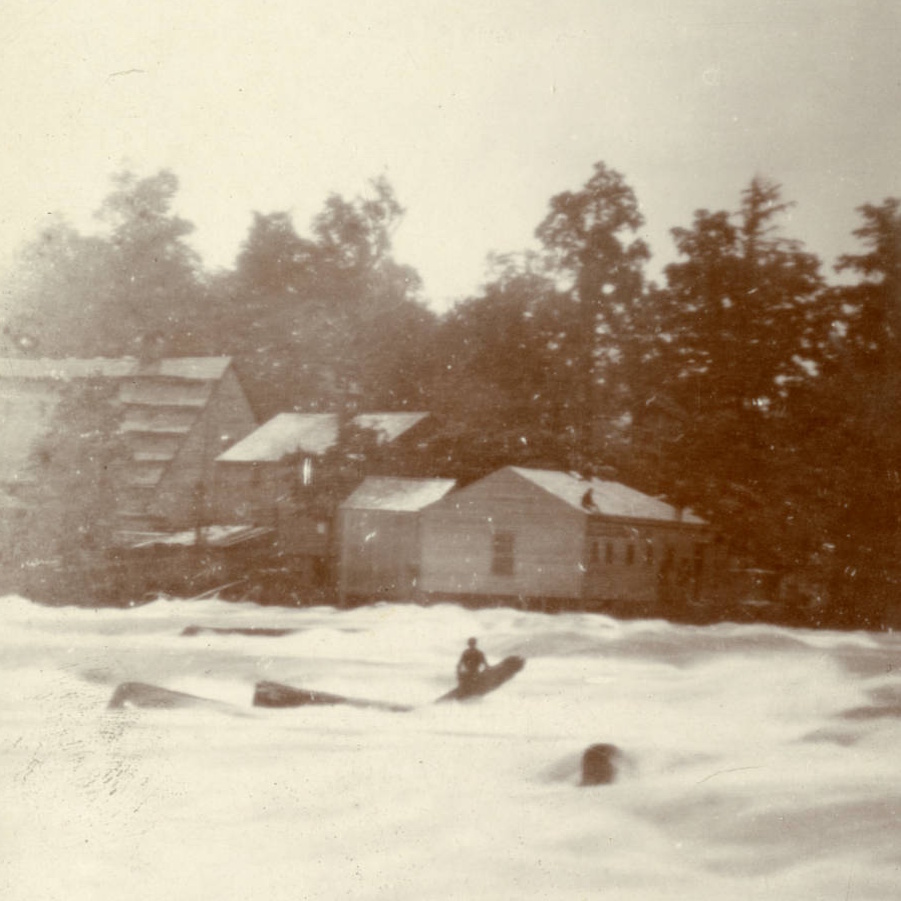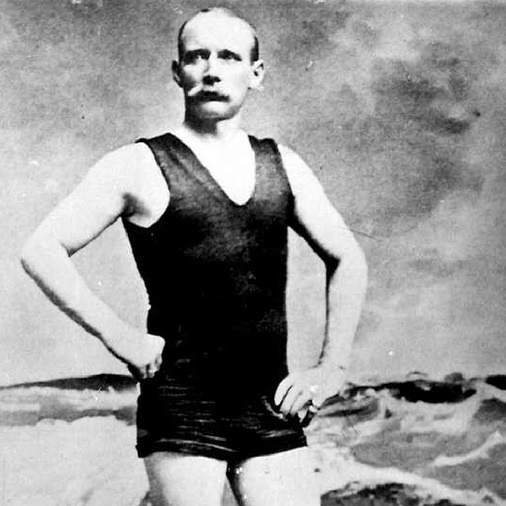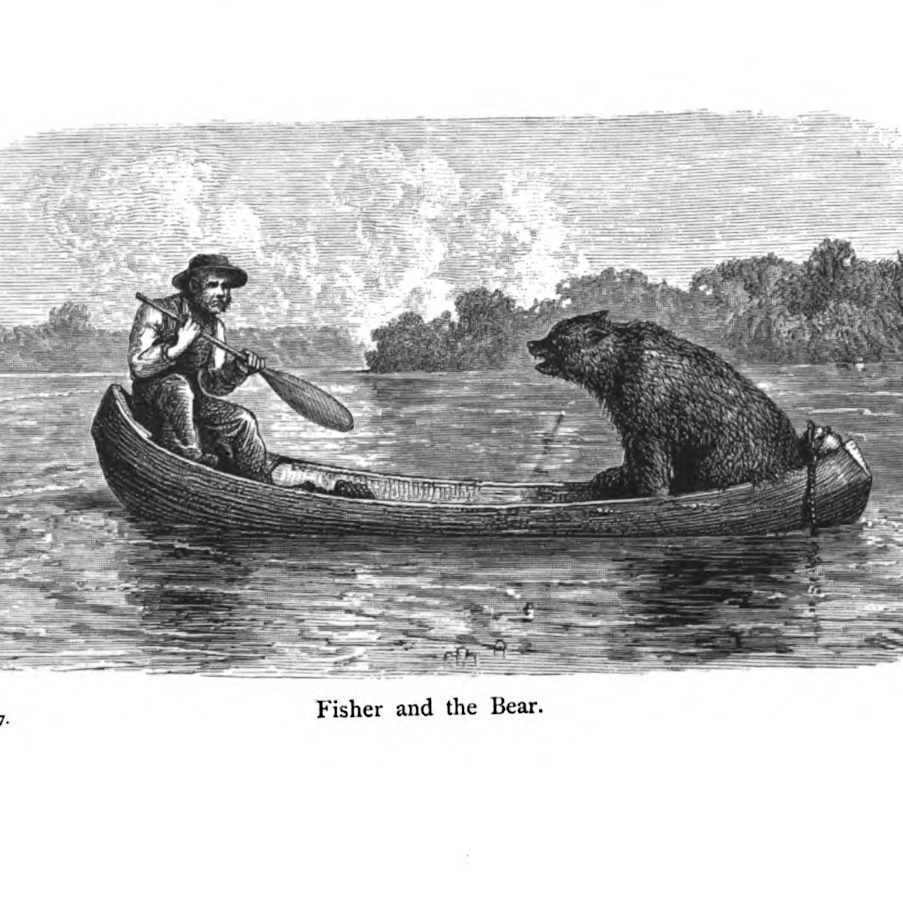Episode Transcript
[00:00:00] Welcome to the Niagara Falls History and Poetry podcast, where I will discuss the history of Niagara Falls and area through the lens of the poetry that has been written about the falls. I am Andrew Porteus, a retired local history librarian who worked at the Niagara Falls Ontario Public Library for almost 30 years. I have been the curator of the Niagara Falls Poetry project since its inception in 1999. The website address is Niagarapoetry.ca or just use your favourite search engine and search for Niagara Falls poetry. My philosophy on the history of Niagara Falls is that if I can't find a poem about it, it didn't happen. I have been known, though, to write the odd limerick about various events so that they did in fact happen.
[00:00:45] One of the limericks I wrote revolves around a cow named Bossy Sims. Bossy was owned by the superintendent of the incline railway in Niagara Falls, New York in the 1860s. Bossy became a tourist attraction in her own right and featured in several tourist guides at the time.
[00:01:03] There is a picture of Bossie taken from one of these guidebooks of her standing at the brink of the american falls. I was unable to find a poem about it, so I wrote a limerick which is now on the Niagara Falls Poetry Project website. The Limerick, which by the way won second prize in the so you think you can rhyme Limerick contest, which was held in 2009, reads,
A cow named Bossy took her drink
Daily by the falls at the brink.
She never went over.
She must have et clover
Of the four leaved kind or she'd sink.
[00:01:39] Yeah, so that's the kind of stuff that I write.
[00:01:43] Fortunately, the website has well over 600 poems on it that were not written by me.
[00:01:49] The podcast that I will be doing will take a number of forms. Some may focus on a particular poem and the events that surround the poem. Some events have multiple poems written about them and may span more than one podcast. Over the course of years, I've identified various themes that run throughout the poems, which in themselves would produce themed subsets of the podcast.
[00:02:13] Two that jump to mind, and the pun is totally intended, are the stunters and daredevils who challenge Niagara by jumping into the falls, led by the Jersey jumper Sam Patch, who jumped not in a suicide attempt, but as a daredevil providing a money producing spectacle. Other stunts include tightrope walking across the falls, barrelling over them, and so on.
[00:02:38] So a second theme is the War of 1812.
[00:02:42] The Niagara frontier was a hotbed of activity of battles, skirmishes, occupations, and sieges during the years 1812 to 1814. Many poems were written contemporaneously and commemoratively around these events. A third theme is death. Of the over 650 poems on the site. Death is a major theme in about 120 of them and is mentioned in many others. A lot of these are from the Victorian romantic area, also an area of reverence of the sublime, which will definitely be the theme of one of the podcasts and will probably pop up in others.
[00:03:22] The Niagara Falls Poetry Project began in the late 1990s. I was a reference librarian at the Niagara Falls public Library, researching the history of hydroelectric power at Niagara Falls. One day when I ran across a dusty volume, the Niagara Falls Electrical Handbook of 1904. While scanning through the book, I noticed a poem fragment, untitled and unattributed, about Father Hennepin at Niagara Falls. Thinking that it was an odd place to publish a poem, I continued with my research. After all, I'd run across poems about Niagara Falls in other places. You'd not really expect them, they were in traveler's guides, old railway schedules, history books, and the like.
[00:04:04] But for some reason, this particular poem fragment kept niggling at me. I eventually searched for the poem again, for in true library fashion, the book had been reshelved in its rightful place. After I finished the research and photocopied it for the Niagara Falls in literature vertical file with other examples of poetry and prose that had been collected from diverse sources over the years, the seed of an idea for publishing an anthology of poetry about Niagara Falls began to take hold. It had been many, many years since one had been published. The more I searched out Niagara poetry over the following years, the more I realized the print anthology was impractical. There were just so many poems out there to examine, and selecting which ones to include was going to be a monumental task with difficult decisions to make. Should this be a literary anthology with only the best of Niagara literature in it? The problem with that is that there are many, many poems of dubious literary quality that have insights into the social and historical character of Niagara Falls, including the two cities that are also worth examining, should they be included? Another problem is deciding what is the best. One poem I put up that I thought of as pretty bad evoked response from a reader who told me that she loved that poem, and it seemed like it was speaking to her directly. So at some point, I decided a website would be a good idea to gather both types of poems to let readers make the decisions. The Niagara Falls Poetry Project website was thus born as a geocities site in 2001.
[00:05:41] Fast forward to 2016 and the imminent approach of my early retirement. There are now over 300 poems on the website and many more waiting to be added, I had long wanted to explore the poetry of Niagara in more depth at a more academic level, so I decided to get a second master's degree, this one in popular culture at Brock University.
[00:06:03] Popular culture may seem an odd choice, but it was a social and historical aspect of poetry, combined with its literary quality, that fascinated me. Popular culture seemed to offer the chance to examine all of these aspects in a way that made sense to me. What I hadn't reckoned with was maintaining a grueling student and teaching assistant schedule while trying to keep in close contact with the family and maintain our small Christmas tree and pussy willow farm. It is ironic that I was so busy doing coursework that I had very little time to spend working on the website that was a very reason for starting the MA in the first place.
[00:06:40] Examining the poetry on the site on a more academic level has shown me that even though Niagara Falls remains pretty well unchanged over our lifetimes, inspiration for writing about them can come from a particular aspect that catches the author's imagination.
[00:06:55] Diverse sources such as a flower waving in the mist, the roar of the falls, an event that takes place there, or the moon reflected on the brink of the falls, can result in wonderful poetic and prose pieces from quick 15 minutes writing sessions that produce one of the most anthologized of Niagara poems, such as John Brainard's the Fall of Niagara, to a years long writing period with different versions produced, such as Jose Maria Heredia's Niagara and Vachel Lindsay's Niagara. Poems abound in Niagara Falls.
[00:07:30] Some poets, like Lydia Sigourney, are inspired to write on different aspects of Niagara, while Adelaide Crabsey, inventor of the poetic form the cinquain, meticulously crafted one of the most exquisite poems on the website.
[00:07:46] The search for and discovery of poems reflecting these many aspects of Niagara Falls has fueled my obsession with the falls and prompted me to share them with the world through the website.
[00:07:57] Oh, and the poem, the fragment that started all of this, I found the full poem early in 2019.
[00:08:03] It's Peter Porter's a Legend of Goat Island, which was published in a limited edition of 100 copies in 1900. Running across that one poem fragment buried in an obscure book 30 some odd years ago became a truly life changing event for me.
[00:08:21] So the excerpt that I came across begins about three quarters of the way through the poem. It's about Father Hennepin's exploration of Niagara Falls in December 1678 and his encounter with the native population there. The excerpt begins speak the word, though it was not heard as he raises hands as our God commands and lifted his eyes to heaven. Thus, in the way the church decrees to supplements, though afar on their knees was a benediction given, the priest was with emotion thrilled, his mind with sacred thoughts instilled, and in an imaginative mood again in a holy church he stood. It was three long years since he had stepped within a sacristy. A wondrous church it was indeed by nature's changeless laws decreed, though man reared not the structure fair, all churchly attributes were there.
[00:09:19] It goes on to compare Niagara falls to a church.
[00:09:22] The gorge was a glorified nave whose floor was the emerald wave. The mighty fall was the raritiest tall the altar, the pure white foam, the azure sky so clear and high was simply the vaulted dome. The column of spray on its upward way was a smoke of incense burned. The cataracts roar now less, now more, as it rose and fell like an organ swell into sacred music turned, while like a Balkan overhead, the spray cloud in its glory spread its crest by the setting sun illumed the form of a holy cross assumed, and the poem goes on from there.
[00:10:04] Niagara Falls is often referred to in religious terms, although usually not as explicitly as in this poem.
[00:10:11] Here the roar is compared to an organ, the mist is a conduit to God in heaven, the plunge of the falls is often referred to as the abyss leading into hell, and so on.
[00:10:21] I will explore these themes in a future podcast also.
[00:10:26] Anyway, this has been a taste of what the podcast will be like. I'm hoping to produce an episode every two weeks, so please subscribe to the channel, turn on notifications, and if you enjoyed this episode, please press the like button. The topic for the next podcast will be about bear in a canoe, memorialized in two separate poems and from a guidebook of the 1840s.
[00:10:49] Talk to you later. Bye.


